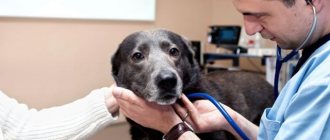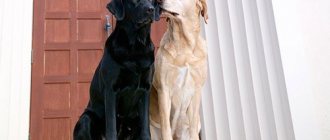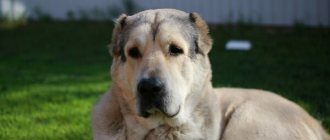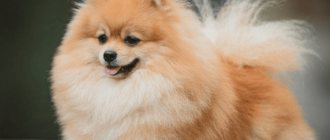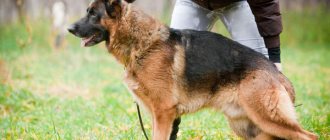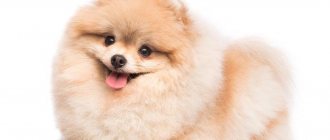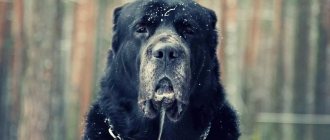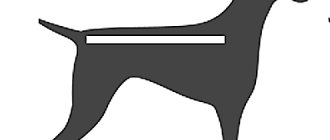The Corella parrot breeds easily in captivity, and this suits breeders. Professional breeders, through many years of selection, have managed to breed many subspecies of these beautiful birds. Artificial breeding has so affected the color of the plumage that all sexual characteristics are mixed up. Now it can be difficult to recognize whether the cockatiel is a boy or a girl.
Methods for determining the sex of a cockatiel
Corellas do not have clearly defined sexual characteristics, so even an experienced breeder does not always understand who is in front of him: a female or a male. In most cases, people buy birds in pet stores and markets, where sellers are interested in a quick sale. They don't need to understand the sexual dimorphism of parrots. In order to sell live goods from your hands, they will confirm to you what you want to hear.
Let's say you take home a bird for the first time. It’s okay if the purchased chick turns out to be the wrong sex: starting to get acquainted with parrots is interesting in any case. But when you purposefully follow a boy or girl, theoretical knowledge will not hurt. At an early age, you can determine the sex of a cockatiel based on three methods:
- Appearance and behavior. The characteristic features of males and females appear only after the first moult; before that, they are colored the same, and their habits are almost the same. Of course, no one forbids making assumptions, but obvious differences will arise once the parrot reaches puberty.
- Laboratory DNA analysis. Gives a high probability of determining gender.
- Genetics. The accuracy of the method is from 50 to 100%. The difficulty is that to find out the sex of the chick you need to see its parents. When purchasing from a store rather than from a breeder, there is no guarantee of the right choice. There is no need to go into detail about the structure of chromosomes; you can simply compare the parrot with mom and dad.
If you are breeding cockatiels, take a closer look at the growing chicks, note the signs inherent in one or the other sex. Boys begin to sing at about three months, so it doesn’t hurt to mark the paw of the supposed male with a ring. This will help guide you in the future when selling birds, because during molting all differences between male and female birds disappear.
Breeding period
Corellas breed during or after the rainy season when food is plentiful. Pairs nest in hollows of large branches and trunks of dead trees. The nest is mainly prepared by the male, the female helps a little.
A clutch usually contains from 3 to 8 white eggs. The average is 5. Both parents take part in hatching, which distinguishes them from other parrots. The female sits at night, the male replaces her with the first rays of the sun. Birds do not leave eggs for food. They also eat in shifts. The incubation period averages 18-22 days. The hatched chicks are blind and covered with yellowish down. Their parents feed them the same way. Brood incubation is replaced by incubation and warming of the chicks.
After a month and a half, the young leave the nest. However, parents continue to take care of the babies and supplement them for some time. The torque is then transferred to the second clutch. There are fewer eggs in the second brood. Due to the harsh life cycle of Australian semi-desert cockatiel broods, girls are born in the vast majority, since the ability to continue life plays an important role in the survival of the species. There are times when there are not enough males, and they are divided into two families for reasons of childbearing. Australia is famous for its intense species competition and difficult conditions for the survival of many bird species.
Appearance
It is a little easier to determine the sex of a cockatiel that is more than a year old, because by this time the bird has acquired new feathers and matured physically. In the appearance of an adult parrot, features appear that indicate belonging to a specific gender:
- in the male the tail is wedge-shaped, pointed, in the female it is in the form of a blade;
- the structure of the female’s pelvic bones does not allow her to place her paws close, she sits low and walks like a duck;
- The boy has a curved narrow crest, wide at the base, the girl has a more magnificent and straight crest;
- the female is large and heavy, the body shape is round;
- Regardless of the subspecies, the male is brighter and more attractive than the female.
This method of sex recognition can be called relatively truthful, since two birds of different sexes are compared to identify gender differences. If you have one parrot, you can only judge its gender based on its appearance only conditionally.
There is no point in asking experts on forums or sending photos of cockatiels to breeders. A frozen image of a bird will not tell you anything; it is impossible to determine the gender with its help.
What experts recommend and warn about
Breeding is not recommended for novice poultry farmers. The reason is simple: the whole process is not that simple. Therefore, before you start and determine the gender of the cockatiel parrot, it is best to study all the features of the breed. The birds are very small and take offense; it is easy to injure their legs or wings.
Besides:
| What do they recommend? | What do they warn about? |
| Sing or play good music often | As long as the bird can move, do not turn on fans or air coolers. |
| He talks a lot: morning, afternoon and evening | Hang mirrors less often. Better to use a trick. It shines, but does not reflect, which means it will not perceive the reflection as another bird |
| They love to scratch the crown on the feathers. Do this as often as possible when shedding. | Don't leave him alone for long to avoid depression and death |
| I love natural light | |
| Be very careful | |
| Try mating your pet | |
| Perform wing trimming in a clinical setting | |
| Avoid high temperatures in your pet's room |
Instead of a mirror, it is better to hang the mixture in a cage
Children are becoming more and more sociable and interested in everything: sounds, people, movement. The female cockatiel is more modest and does not experience any special difficulties in communication. Therefore, they will require a special approach. It must be said that females of all races behave this way. You will have to pick up the key yourself. If you want a chatty and cheerful friend, then what really matters is how to tell a female cockatoo from a male.
Characteristic behavior
Breeders note that adult males and females are strikingly different from each other in habits. This is what boys do:
- they sing loudly, especially when the reproductive instinct awakens;
- tap dance with their beaks on ringing surfaces;
- protrude the wings and fold them in the shape of a heart;
- walk freely towards a person, are not afraid of hands;
- they put their paw on their cage neighbor, showing the character of a conqueror.
Corella girls do not strive to amaze others with their talents. They are phlegmatic, modest, quiet. They don't sing, they coo. They don’t allow you to pull yourself together, they swear and bite. They are constantly busy organizing their home. During mating games, the female accepts courtship, and the male displays himself and shows himself in all his glory.
A bird living alone suddenly laid an egg - this is a female, now there can be no mistake. This is one of two cases when you can find out the sex of a cockatiel with 100% accuracy.
How to gain the trust of a feathered pet
If you have a Corella parrot in your house who has a bad temperament or is unreasonable, you need to be patient. It is unacceptable to react with irritation to a bird’s aggression. To stop your parrot from biting, hissing, and misbehaving, you need to be dominant. You can use a combination of three methods of education: get used to the word “no”, lure with surprise, speak calmly.
We educate correctly
If it is determined that the parrot is not misbehaving due to fear or illness, it is necessary to wean it from the habit of biting. To do this, you need to develop a plan and stick to it:
- Don't rush to tame. It is necessary to give the bird the opportunity to get used to its new home.
- Don't look your partner in the eye when he's very close. A direct gaze is perceived as superiority of the enemy and encouragement to fight.
- In response to an attack, strictly say the word “no!” or not! “It is advisable to accompany the performance by clapping your hands.
- When a bird bites, it receives a light click with its beak. This technique can only anger the cockatiel; you need to be prepared for an attack.
It would be nice to learn to understand the signals and sounds that come from the parrot. Perhaps, in a particular case, hissing is not a sign of anger at all, but simply some kind of training of the vocal apparatus.
We offer a treat
What should you do if your cockatoo parrot hisses and then starts beating with its beak? A good way to distract your parrot's attention is to give him something tasty. Sometimes birds ask for food by biting the owner's ears, nose, or hands.
Attention! The dessert is left in a saucer not far from the bird or placed on a spit. Do not serve food on your palms, as this may make your parrot even more scared.
Let's show calm
The owner has to communicate a lot with the pet, otherwise it will be difficult to get to his place. Silent speech calms the angry parrot, humility disarms. You can lovingly call your cockatiel by name as he makes hissing noises and prepares to attack. A witty bird will listen and replace anger with pity.
DNA analysis
The second case that gives confidence that a bird belongs to one sex or another is DNA analysis. The effectiveness of using this method has long been proven, but its cost is too high. In addition, laboratories engaged in such analyzes are located only in large cities. You need to have a good reason to try to determine the sex of a cockatiel using DNA.
The laboratory takes feathers, blood or sewage from the cloaca for analysis. Identification of newborn chicks is possible by the shell with membrane from which they hatched. If feathers are chosen as the object of study, they need to be specially plucked - those that fall out on their own are not suitable. The down under the wing is not informative; medium feathers with a white tip are taken. At the end of the work, the laboratory technician sends the result by email or notifies you by phone.
The selected material must be submitted for verification within two days.
Age: purchase, life expectancy.
The desire to find out the age of a new pet is quite natural, because when buying a living creature, we want it to remain with us as long as possible. At what age is it best to get a Corella parrot? The ideal time to change housing for a cockatiel is from 10-14 weeks to 3.5 months. During this period, it is easier for them to adapt to new living conditions and get comfortable before the first molt.
It is difficult to definitively answer how many years Corella parrots live, since their life expectancy directly depends on their owner. On average, these exotic companions live 15 years, but under good conditions and proper care this figure can increase to 20 years.
Do not forget that the average lifespan of a cockatiel parrot in captivity directly depends on the actions of the owner. These birds are not too picky about their habitat and food, but it is better to provide them with good conditions. For example, due to their rather large size, they need a large cage. Any stress, illness, or improper care significantly shortens the life of your pet, so before bringing exotic animals into your home, you need to think several times whether you can provide them with comfortable conditions.
Plumage color
As they grow older, all parrots go through a juvenile molt - a radical change in plumage. The inconspicuous baby fluff sheds, and is replaced by dense, richly colored feathers. In cockatiels, this occurs between 8 and 12 months. Usually, by the second year of life, a bird acquires the feather color that was genetically determined by its parents. It is much easier to distinguish a male from a female if they have a dominant gray color, but with some mutations this is almost impossible to do by appearance.
Natural gray
The natural cockatiel is called dimorphic, which means there is a clear difference between birds of opposite sexes. Natural coloring makes it easy to determine the sex of a cockatiel parrot. The boys' body is covered with gray feathers, on the head there is a yellow mask and a crest. Round orange spots “bloom” on the cheeks.
The girls are a little lighter, their feathers seem to be sprinkled with dust. The gray mask is slightly diluted with yellow, the crest is brown. The cheeks of a young female are light yellow, and with age they acquire a brick tint. The tail feathers are slightly yellowed along the edges and marked with horizontal black stripes along their entire length. Light spots are barely noticeable on the inside of the wings.
White-faced cheekless
These birds have different colors, with the exception of lutino. They do not have yellow pigment. A clear peculiar feature is the absence of orange circles on the cheeks. The mask on the head of the male is pure white; in females there is an admixture of gray or cinnamon shades.
Lyutino
Bright color, artificially bred. The mutation gene suppresses natural coloring, resulting in yellow parrots mixed with white. Red-eyed males are identical in appearance to females, making it extremely difficult to determine their gender. If you're lucky, you'll find dark streaks on the bird's tail and dots on the wings, like natural cockatiels. This means that this is a female.
Pearl barley
Corellas, whose coloring is called “pearl,” look very impressive: their feathers have a special pearl-shaped pattern. The center of the feather is white or yellow, and the edges are darkened. The first molt deprives the male of all his beauty, or it happens after a while, but the female remains beautiful for her entire life.
Albino
Albino males and females are white, their mask and forelock are yellow. The cheek spots are the same, the eyes are red. A minor difference with the female is that her wings and tail appear to have been sprayed with pale yellow paint.
White
A very expressive mutation, it appears from crossing gray males with albino females. The result of selection is white cockatiels with a sunny yellow tint of feathers. The eyes of such majestic individuals are usually black. How to recognize a white male? The tail feathers on his tail are white, without any impurities.
Determination methods
The poultry hobbyist should only buy young birds if he wants to:
- He managed to successfully tame the parrot.
- His pet learned to speak well.
- The purchased bird lived for a long time.
This is where many novice amateurs make mistakes. They are associated both with direct deception on the part of sellers who sell an old parrot under the guise of a young one, and with the mistakes of the buyer who does not know how to correctly determine the age of the bird. Often even novice sellers do not know how to do this. It also happens that a seller who has a lot of poultry products gets confused and sells an already mature bird as a young one.
There is only one way out of the situation - to determine the age of the cockatiel parrot immediately before purchasing. This can be done based on a number of external signs. The color of young and old birds differs little, so you need to look very carefully. The practical experience of many generations of poultry farmers suggests a number of ways to determine the age of cockatiels. All of them take into account the differences between a young parrot and an old one in small details.
On the head
This part of the body contains organs, by the appearance of which one can try to determine the approximate age of the bird being examined. These are the eyes, beak and crest.
By the eyes
How to find out the age of a cockatiel parrot by its eyes? You need to take a close look at their color. The eyes of young parrots shine, their color has a brownish tint. Their irises are black. Adult parrots have dull eyes. As the bird gets older, they gradually darken and eventually turn black. The iris of adults is brown. As life goes on, it becomes more and more clear.
By the crest
When buying a new bird, you should pay close attention to the condition of the plumage of its head. The head of a young cockatiel has the following characteristic features:
- The feathers on the crest are short and straight.
- There are small tubes on the skin from which new feathers will then appear.
If the bird is already mature, then the ends of the feathers of its crest are slightly curved. There may be an open area of skin under the tuft.
By beak color
Another marker is the color of the parrot's beak. In chicks it is pale pink, with a light wax. In adult birds it becomes dark gray over time. In addition, the beak of adult parrots is much larger.
By paws and claws
You can determine the approximate age of a cockatiel by paying close attention to its paws and claws. The claws of young birds are small, with a pinkish tint. With age, the claws grow and become darker, acquiring a grayish tint during the life of the bird.
The chicks' feet are pinkish. There are no cracks on their surface. The feet of six-month-old birds are darker, with pronounced horny scales and cracks on their surface.
By plumage
You can determine approximately how long a bird has lived by the state of its plumage. It is completely different for chicks and mature cockatiels.
The chicks have not yet gained life experience and do not know how to care for their feathers at all. They are disheveled, there may be bird droppings on them, which young birds do not yet know how to clean off. A short tail and dull feather color also indicate that the parrots are barely fledged.
In adult parrots, the plumage looks much more beautiful. It is quite brightly colored. It is well-groomed, as the birds love and know how to clean it. The tail of adult cockatiels is much longer than that of juveniles.
At about 4 months of age, the chicks begin to molt. They develop beautiful plumage at the age of about 6 months. Therefore, molting is one of the signs of an individual’s youth. But adults can also shed if they suffer from infectious diseases.
By singing
Young birds cannot sing. They master this task by about the age of 6 months. Adult parrots sing very beautifully. Therefore, if a bird sings well enough, it means it is no longer a chick.
By behavior
The behavior and movements of young birds differ from those of adult birds. Young parrots fly poorly or do not yet know how to do it at all. They sleep, leaning on a perch with two paws, or even sitting on the bars of the cage. It is still difficult for them to maintain balance. Very old cockatiels can sleep in the same position, and a potential parrot buyer should remember this. Adult pets usually sleep leaning on a perch with only one paw.
Singing
Both in natural and at home conditions, the cockatiel sings very melodiously, accurately repeating the sounds it hears. Nymphs easily copy the sounds of alarm clocks, household appliances and other pets. But teaching them to talk is a little more difficult. To do this, you need to show self-control and patience.
Male cockatiels sing especially beautifully during the mating season. At this point, it is easiest to teach the cockatiel to repeat sounds, as well as melodies. To do this, you should hum or whistle simple songs several times a day.
Keeping at home and breeding
Photo of a yellowish cockatiel sitting on a glass
Despite the fact that a hot climate prevails in the homeland of cockatiels, it is best to maintain the room temperature from 18 to 25°C. Even a temporary decrease in indicators to +10°C will not have detrimental consequences for the health of the bird. However, exposure to frost or draft will quickly lead to illness or death of the nymph.
The average daylight hours should be 14 hours in the warm season, and 10 hours in the cold season. It is also useful for cockatiels to turn on a UV lamp.
Information about cockatiel parrots when kept at home
and a Gray-yellow cockatiel sits on a branch photo
In order for your feathered pet to quickly get used to its new place of residence, you must choose and equip its cage correctly. For one bird, the dimensions should not be less than 50x40x60 cm. For a pair of nymphs, larger cages are needed, measuring 150x60x90 cm.
It is advisable to release parrots daily so that they have the opportunity to fly freely and walk around the house for 1.5-2 hours. If this is not possible, you should purchase a cage in which the birds can fly from place to place.
The bars of the cage should not be painted, since paint can cause poisoning if it enters the bird’s stomach. Inside, the nymphs' home should be equipped with several perches, feeders and drinkers attached to the walls. It is advisable to hang “bird” toys, a mirror and a bell. At the bottom you should put branches of woody plants treated with boiling water and place a bowl with sand.
Corellas love to swim, so you need to put a bathing suit with water in the cage. Clean up as it gets dirty, promptly discarding droppings, fallen feathers and leftover food.
How to feed your pet cockatiel
In the photo, a female and a male cockatiel are feeding on a mineral stick.
To provide the cockatiel’s body with a sufficient amount of energy and maintain health, you should give them succulent and grain-based foods, and also periodically introduce vitamin and mineral complexes into the diet.
Grain mixtures must contain the following components:
- millet;
- oats;
- corn;
- wheat;
- sunflower seeds;
- flax seeds and weeds.
It is best to purchase balanced special food intended for parrots in specialized stores.
Corellas love juicy fruits and berries. Citrus fruits and unroasted nuts can be given occasionally. Among vegetables, nymphs prefer zucchini, carrots, and pumpkin, and among greens, lettuce, spinach, young shoots of dandelion and beets.
For protein foods, you should choose low-fat cottage cheese and hard-boiled eggs. In the autumn-winter period, nymphs should be given branches of pine needles and rowan 2 times a week.
Breeding information
Photo of a gray-yellow cockatiel
Corellas can easily reproduce at home if they are provided with proper care and nutrition. The optimal breeding period is from May to October. Only healthy birds with no visible signs of disease should be brought together. A special house must be placed in the cage, where the females build nests and lay eggs.
Parents alternately warm the clutch of eggs, from which chicks emerge after 20-23 days.
In the first days of life, females feed the chicks with “fore stomach milk”, which is a yellowish liquid. On the 3-4th day, they begin to feed the cubs solid food, which they first swallow, partially digest, and then regurgitate. After 2 weeks, babies can absorb small pieces of food on their own. And by the beginning of the second month of life, they leave the nest and try to fly.
During the breeding period, difficulties with the health of the female and babies may arise, so as an alternative, you can buy a chick from an experienced breeder.
Interesting Facts
Photo of a cockatiel on a cage
There are several interesting facts that colorfully characterize cockatiels:
- The nymph's intelligence is identical to the mental development of a 3-4 year old child.
- A parrot raised in captivity becomes completely tame, considering a person a member of its family.
- In the wild, a cockatiel sitting on the ground will not allow a person to approach it, but when it is on the branches of trees, it can safely allow people to touch it.
- Nymphs recognize about one and a half hundred different images per second, while humans recognize only 16.
- There are schools in Australia that teach cockatiels and other parrots to talk.
- Nymphs do not have vocal cords, and they produce sounds only with their mouths.
- Depending on which paw the cockatiel takes food with, it can be considered right-handed or left-handed.
Habitats
Photos of gray cockatiels
Nymphs are indigenous to Australia. Their main habitat is eucalyptus groves in river floodplains, as well as fertile steppes, in which there are enough solitary trees and tall shrubs. Small groups of cockatiels live in semi-deserts.
During the breeding season, cockatiels break into pairs, hatch chicks and take care of their offspring. The rest of the time they unite in flocks of 10-15 individuals. If the year is excessively dry, parrots move in large numbers closer to bodies of water.
On other continents, cockatiels are not found in the wild, although they are very popular to be kept instead of budgies in North America, Asia, Europe and in our country. Domestic parrots that fly away from their owners are not able to survive in the wild on their own. Therefore, you need to ensure that feathered pets do not have the opportunity to fly out of windows or doors into the street.

